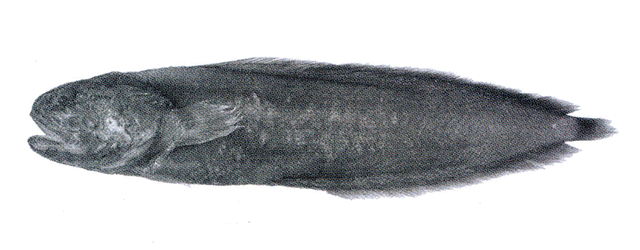| Dinematichthyidae (Viviparous brotula) |
| 8.4 cm SL (male/unsexed) |
|
reef-associated; marine; depth range 0 - 12 m |
| Eastern Indian Ocean to Western Central Pacific: Andaman Is. to Sumatra, Thailand, Vietnam, Taiwan and the Ryukyu Is., north to Australia (up to Lord Howe I.) and eastwards to Micronesia, Line Is., Tuamotus and Pitcairn Group. |
|
Dorsal soft rays (total): 72-88; Anal soft rays: 55-70; Vertebrae: 40-45. This species is distinguished by the following characters: D 72-88; A 55-70; moderately large eyes (1.7-2.8%SL); slender body; blunt snout, many cirri; cheeks with scales and rarely 1-2 scales above opercular spine; with upper preopercular pore; outer pseudoclasper broad-based, large, often extending beyond hood when in resting position, while the inner one is small, with equal anterior and posterior lobes; otolith length to height 1.9-2.1, with gently curved dorsal rim; otolith length to sulcus length 1.5-1.6, ostium length to caudal length 3.5-4.5; vertebrae 11-12 + 29-33 = 40-45 (Ref. 81230).
Description: Characterized by uniform dark brown to blackish color; body depth at origin of anal fin 14.8-19.5 (mean 17.8) % SL; caudal rays 14-18; anterior nostril high on snout, about one-third or less distance from lip to anterior rim of eye (Ref. 90102). |
| Occurs in holes and crevices of coralline and volcanic rock (Ref. 71230). Cryptic and solitary in shallow water (<12 m) (Ref 90102). |
|
Least Concern (LC); Date assessed: 15 August 2019 Ref. (130435)
|
| harmless |
Source and more info: www.fishbase.org. For personal, classroom, and other internal use only. Not for publication.

